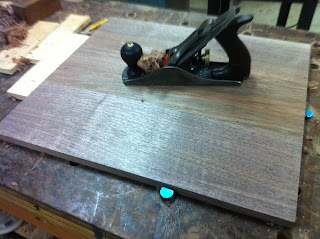 |
| here is the straightedge lined up on the blade |
But this week I had a bright idea: I used my machinist's straightedge to lengthen the reference surface to a whopping 24". By laying the bar flat on the table and resting one edge against two opposing teeth on the blade, I essentially increased my precision roughly 5-fold.
Check out these pics:


